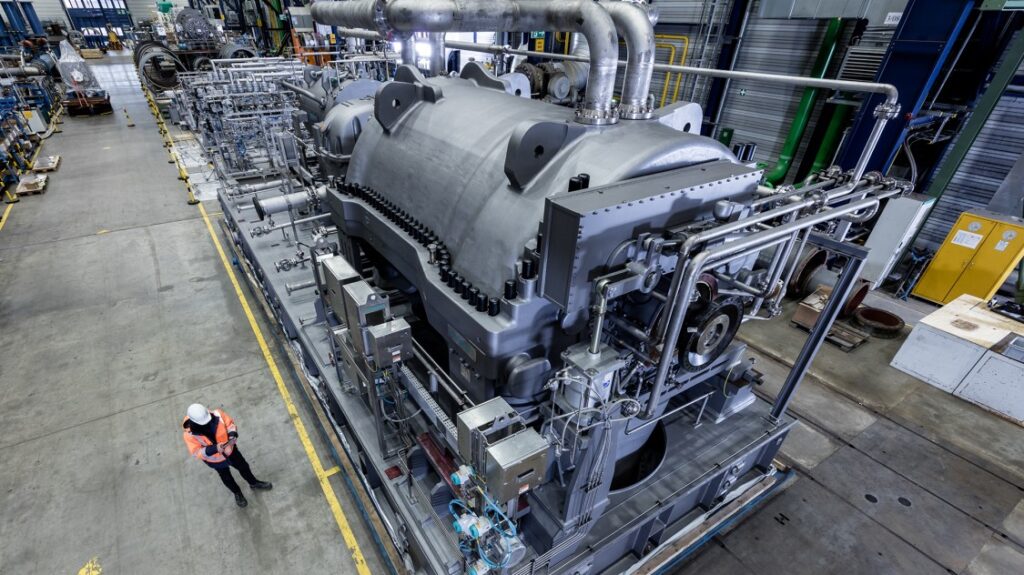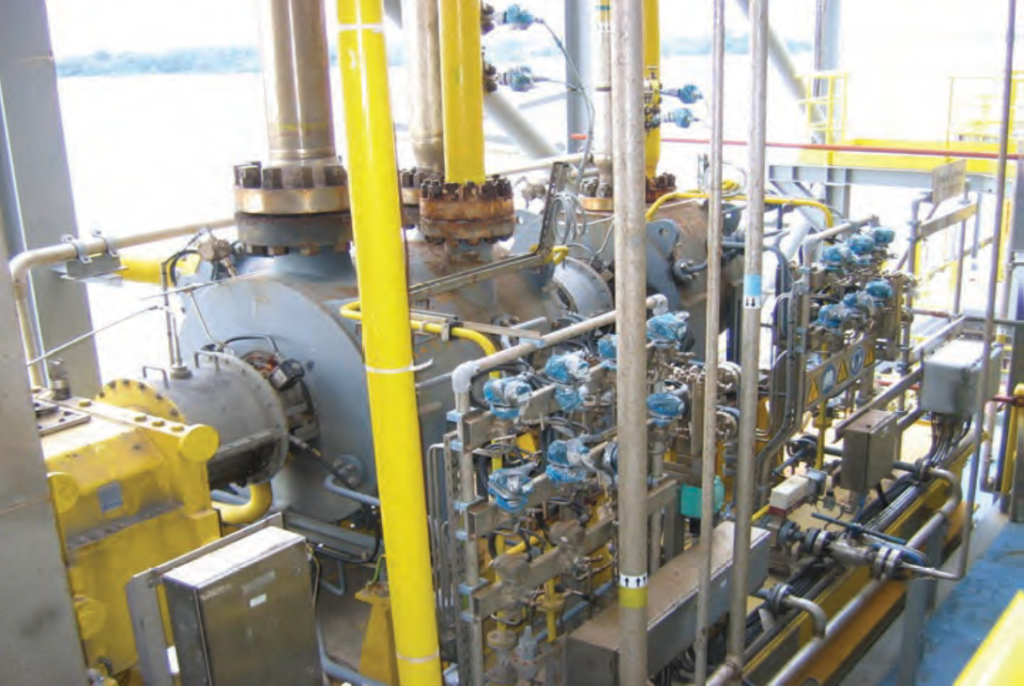SETTLE-OUT PRESSURE (SOP) - RISKS & FAILURES IN CENTRIFUGAL COMPRESSORS
LIMITATIONS IN ENGINEERING & DESIGN ABOT SOP
Contaminant Ingress: When the sealing system is unpressurized internally during startup, there is a risk of dirt contaminants or liquid slugs present in the gas outside the seals entering the compressor seals. These contaminants can immediately damage the seals, leading to leakage and potential failures. This is a critical risk that needs to be addressed.
Seal Design Considerations: The design of the seals plays a crucial role in preventing contaminants from entering the compressor during startup. However, certain limitations in the seal design, such as inadequate sealing effectiveness under specific operating conditions, may increase the risk of seal failures. It’s important to consider these limitations during the engineering and design phase.
To address these limitations and mitigate the risks associated with the settle-out pressure condition and seal failures, the following solutions can be applied:
Booster Systems with Clean Gases: Implementing booster systems that introduce clean gases at higher compressor settle-out pressures before startup can help create a positive pressure differential across the seals. This prevents the ingress of contaminants by maintaining a clean and controlled environment within the compressor.
Depressurizing the Compressor: Another solution is to depressurize the compressor before startup. This can be done by venting the gas from the compressor or utilizing an appropriate depressurization system. By reducing the pressure within the compressor, the risk of contaminants entering the seals is minimized.
Effective Filtration Systems: Installing effective filtration systems in the gas supply lines and intake systems can help remove dirt particles and other contaminants from the incoming gas. This reduces the likelihood of contaminants reaching the compressor seals during startup.
Improved Maintenance Practices: Implementing regular maintenance practices, such as inspections and cleaning of the sealing systems, can help identify and remove any accumulated dirt or debris that may compromise the seals’ integrity. This proactive approach ensures that the sealing system is in optimal condition during startup.
Enhanced Seal Design: Working closely with seal manufacturers and incorporating advanced seal designs that are specifically tailored to the operating conditions, including startup scenarios, can improve the effectiveness of the seals in preventing contaminants from entering the compressor.
By applying these solutions, the reliability and safety of centrifugal gas compressors can be significantly enhanced, minimizing the risk of seal failures caused by the settle-out pressure condition. It is crucial to consider these limitations and take appropriate measures during the engineering and design phases of both existing plants and new projects in the oil and gas industries.

WHY, WHEN, WHERE, WHAT, WHICH, HOW TO APPLY SOP IN CENTRIFUGAL GAS COMPRESSORS
WHY is it important to address the settle-out pressure condition? The settle-out pressure condition poses a critical risk of failures in seals in centrifugal gas compressors. If dirt contaminants or liquid slugs enter the compressor seals during startup, it can cause immediate damage, compromising the reliability and safety of the compressor.
WHEN should the solutions be applied? The solutions should be applied during the startup process of gas centrifugal compressors when the sealing system is transitioning from a pressurized state to an unpressurized state internally. It is crucial to address this condition to prevent contaminants from entering the seals and causing failures.
WHERE should the solutions be applied? The solutions should be implemented in gas centrifugal compressors, specifically focusing on the sealing system and the compressor startup process. This applies to both existing plants and new projects in the oil and gas industries.
WHAT solutions can be applied? There are several solutions that can be applied to mitigate the risks associated with the settle-out pressure condition:
- Booster Systems with Clean Gases: Introduce clean gases at higher compressor settle-out pressures before startup to create a positive pressure differential across the seals, preventing contaminants from entering.
- Depressurization: Depressurize the compressor before startup by venting the gas or utilizing a depressurization system to minimize the risk of contaminants entering the seals.
- Effective Filtration Systems: Install robust filtration systems to remove dirt particles and contaminants from the incoming gas, reducing the likelihood of seal damage.
- Enhanced Maintenance Practices: Implement regular inspections and cleaning of the sealing systems to remove any accumulated dirt or debris that may compromise seal integrity.
WHICH solutions are most suitable? The suitability of solutions depends on various factors such as the specific compressor design, operating conditions, and available resources. It is important to consult with experts, including compressor manufacturers and engineering professionals, to determine the most appropriate solutions for a particular application.
HOW to apply the solutions effectively? To apply the solutions effectively, the following steps can be taken:
- Conduct a thorough assessment of the compressor system and identify the specific challenges related to the settle-out pressure condition.
- Engage with relevant stakeholders, including compressor manufacturers, engineering consultants, and maintenance personnel, to gather expertise and insights.
- Design or select appropriate booster systems, filtration systems, and maintenance procedures based on the specific requirements of the compressor system.
- Implement the chosen solutions during the engineering and design phase of new projects or during maintenance and upgrade activities in existing plants.
- Regularly monitor and evaluate the effectiveness of the implemented solutions and make necessary adjustments or improvements as needed.
By applying these solutions effectively, the reliability and safety of gas centrifugal compressors can be significantly enhanced, minimizing the risk of seal failures caused by the settle-out pressure condition. It is crucial to prioritize reliability and safety considerations in both existing plants and new projects in the oil and gas industries.

PROCEDURES, ACTIONS, STUDIES, MITIGATIONS, RECOMMENDATIONS TO APPLY ABOUT SOP IN GAS COMPRESSORS
Procedures and Actions:
- Develop startup procedures that account for the transition from pressurized to unpressurized sealing systems, ensuring proper sequencing and control.
- Establish maintenance procedures to inspect and clean sealing systems regularly, removing any accumulated dirt or debris that could compromise seal integrity.
- Implement a comprehensive training program for operators and maintenance personnel to ensure they understand the importance of proper startup procedures and maintenance practices.
Studies and Analysis:
- Conduct a detailed engineering analysis to identify the potential risks associated with the settle-out pressure condition and evaluate the effectiveness of current sealing system designs.
- Perform computational fluid dynamics (CFD) simulations to assess the behavior of contaminants and liquid slugs during startup, helping to identify critical areas for improvement.
Mitigations and Recommendations:
- Implement booster systems that introduce clean gases at higher compressor settle-out pressures before startup. This helps maintain a positive pressure differential across the seals, preventing contaminants from entering.
- Consider the use of double-seal systems or advanced sealing technologies that offer improved protection against contaminants and liquid ingress.
- Install effective filtration systems in the gas supply lines and intake systems to remove dirt particles and contaminants from the incoming gas, reducing the risk of seal damage.
- Explore the option of depressurizing the compressor before startup by venting the gas or utilizing a depressurization system to minimize the risk of contaminants entering the seals.
- Collaborate closely with compressor manufacturers and engineering consultants to ensure the selection and design of sealing systems that are specifically tailored to the operating conditions, including startup scenarios.
Monitoring and Maintenance:
- Implement a robust monitoring and inspection program to assess the condition of sealing systems regularly, identifying any signs of wear, damage, or degradation.
- Develop a comprehensive maintenance plan that includes regular cleaning, lubrication, and replacement of seals, as well as addressing any issues identified during inspections.
- Monitor process conditions and operating parameters to detect any deviations that could indicate potential problems with the sealing system.
By implementing these procedures, actions, studies, mitigations, analysis, and recommendations, the reliability and safety of gas centrifugal compressors can be enhanced, reducing the risk of failures in seals caused by the settle-out pressure condition. It is important to integrate these measures into both existing plants and new projects in the oil and gas industries to ensure the long-term integrity and performance of the compressors.

